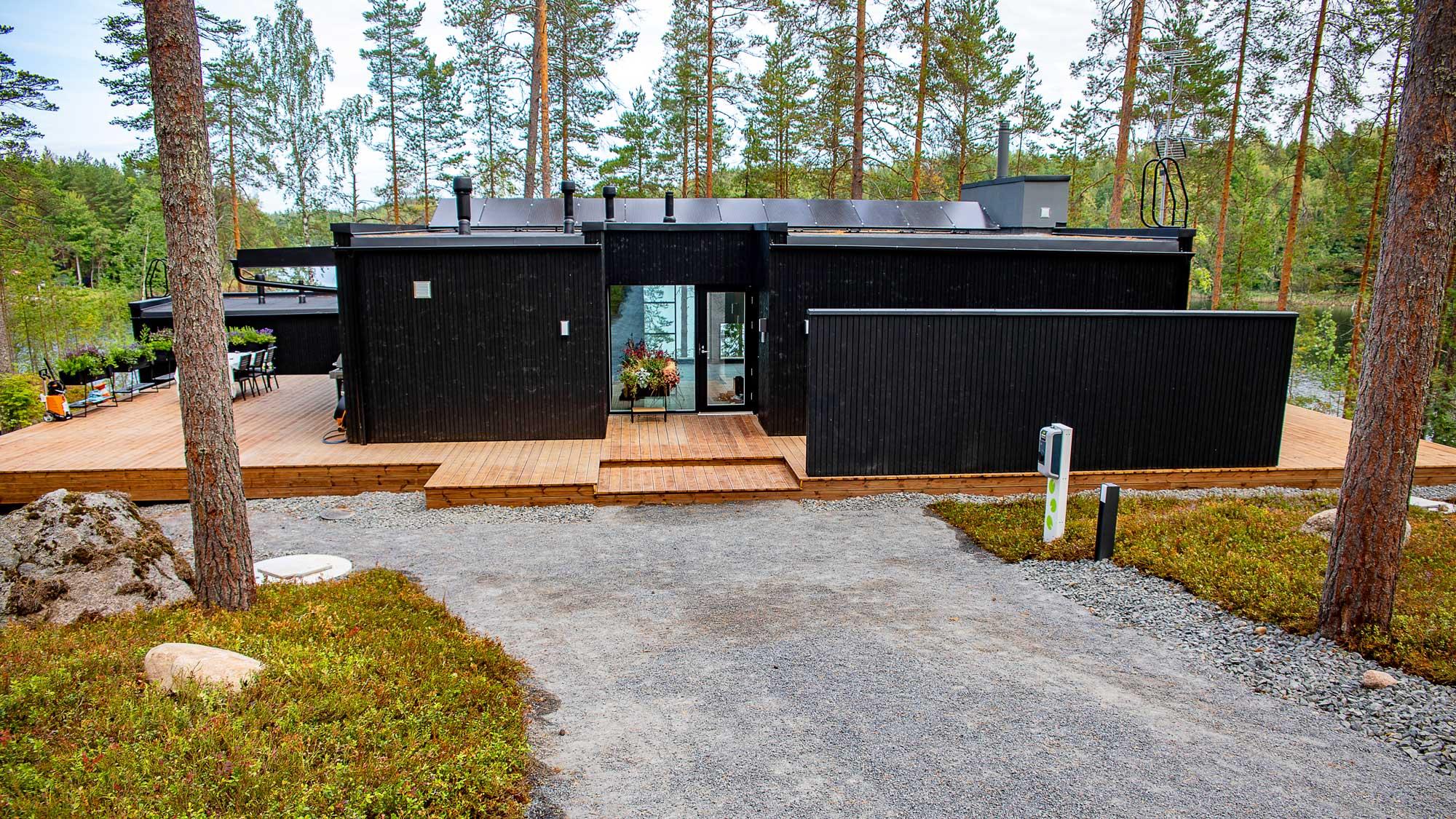Does heartwood have better properties? What should be taken into account when calculating quantities? When should I choose a wrap-around liner panel? We answered the general questions about exterior lining panels in our article.
Does heartwood for exterior cladding have better properties?
The exterior cladding panels have been stuck with the superior properties of the heart. This is actually an old tradition, when exterior cladding was made of pine, where the heartwood's durability is much better than the sapwood. Another factor is that, in the past, cladding was made of board.
Today, exterior cladding panels are made from spruce planks. Spruce is a more durable material and does not bleed resin like pine. In spruce, the cell is closed throughout the wood and so there is no difference in durability between heartwood and sapwood.
Exterior cladding is made by splitting the heartwood plank, which is a healthier raw material than board, which has more dry twigs that easily come off. Making the product from the plank causes the wick pieces to exhibit wick stranding and possibly wick splitting. These pieces are placed on the back side of the exterior cladding panels to prevent water pockets on the surface of the exterior cladding.
What should be taken into account when calculating the quantity of exterior cladding panels?
Timber loss varies a lot depending on the shape of the house and the style of installation. A house with a lot of windows needs less timber than a house with a lot of wall space. End-jointed exterior cladding panels reduce wastage because the panel can be extended with the next panel in the middle of paneling.
TIP: Always start panelling on the wall where you need long pieces of timber and leave the walls where shorter pieces are sufficient for panelling last.
Do the shades of the exterior cladding panels match the shades on the colour charts?
The exterior cladding panels are painted in a colour that is relatively close to the shades on the colour charts. However, translucent tones may differ greatly from the colour charts due to factors such as the quality of the wood surface. A fine-sawn wood surface absorbs more finishes than a smooth-sawn surface and is therefore darker in overall appearance. When browsing shade charts, it is also important to remember that the shades are printed on paper and may differ slightly from the actual shades for technical reasons.
What is exterior cladding with intermediate coatings?
Intermediate painting means that the exterior cladding panel is primed and topcoated once. The advantage of intermediate painting is that the panel already has one protective film over the wood surface. A pre-painted cladding panel only needs a light top coat to hide the fixing marks. Painting an intermediate painted wood surface also consumes significantly less paint than painting a primed surface. However, please note that the intermediate painted product is not finished and still requires a final surface treatment.
When should you choose a wraparound exterior lining panel?
If the wood product is used on a fence, carport, or in a location where both sides of the panel are visible, a wraparound product is in place. Exterior cladding panels are also available in a wraparound version. The benefits of wrapping in exterior cladding include the protection provided by the primer to the back face of the panel, which protects the wood from mould, water and other contaminants. Coating also reduces the deformation of the panel, meaning that the wood reacts more slowly to changes in humidity in the air.
How often do exterior cladding panels require maintenance?
The maintenance interval is influenced by the shape of the building and the environment. The house should be inspected every two years and the exterior cladding should be washed if necessary. Any mechanical damage revealed by the inspection should be repaired as soon as possible after it is discovered, to prevent dirt and moisture from penetrating deeper into the wood. Repainting should be carried out every 5 to 15 years.

